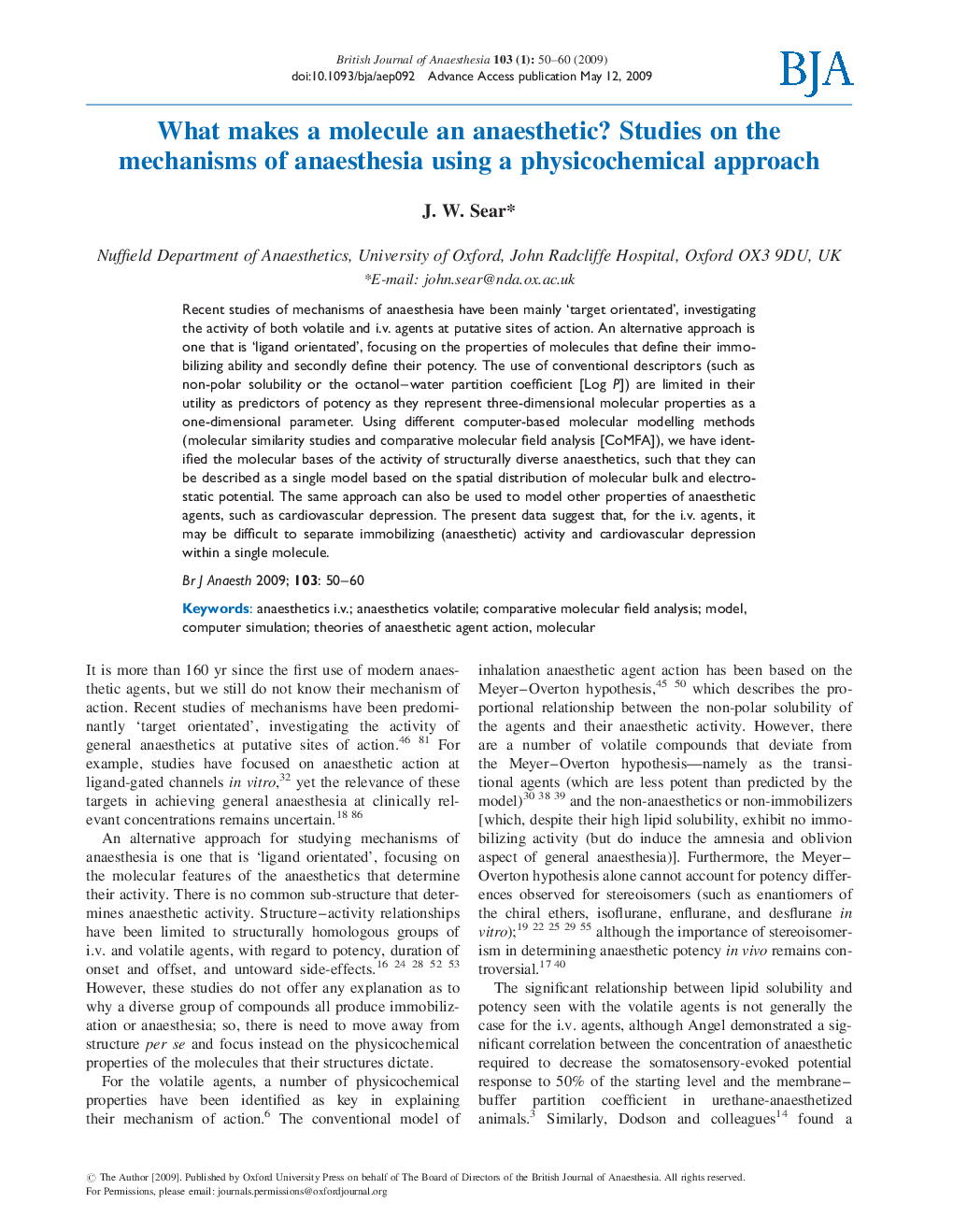| Article ID | Journal | Published Year | Pages | File Type |
|---|---|---|---|---|
| 8937281 | British Journal of Anaesthesia | 2009 | 11 Pages |
Abstract
Recent studies of mechanisms of anaesthesia have been mainly 'target orientated', investigating the activity of both volatile and i.v. agents at putative sites of action. An alternative approach is one that is 'ligand orientated', focusing on the properties of molecules that define their immobilizing ability and secondly define their potency. The use of conventional descriptors (such as non-polar solubility or the octanol-water partition coefficient [Log P]) are limited in their utility as predictors of potency as they represent three-dimensional molecular properties as a one-dimensional parameter. Using different computer-based molecular modelling methods (molecular similarity studies and comparative molecular field analysis [CoMFA]), we have identified the molecular bases of the activity of structurally diverse anaesthetics, such that they can be described as a single model based on the spatial distribution of molecular bulk and electrostatic potential. The same approach can also be used to model other properties of anaesthetic agents, such as cardiovascular depression. The present data suggest that, for the i.v. agents, it may be difficult to separate immobilizing (anaesthetic) activity and cardiovascular depression within a single molecule.
Keywords
Related Topics
Health Sciences
Medicine and Dentistry
Anesthesiology and Pain Medicine
Authors
J.W. Sear,
